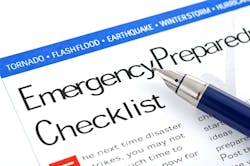Emergency preparedness lacking within many organizations, survey finds
With concerns surrounding workplace violence and active shooter mitigation at an all-time, many organizations in the both the public and private sector have been forced to take a harder look recently at their security measures to evaluate their adequacy for this looming threat. But for all of the talk about what businesses are doing to improve their security posture, a new study conducted by mass notification solutions provider Rave Mobile Safety recently found that emergency preparedness is lacking in many companies today.
In fact, the “2019 Workplace Safety and Preparedness Survey,” which polled 540 respondents in a wide range of industries, found that 53 percent of organizations “never” perform drills or test their emergency plans when it comes to workplace violence scenarios. Another 45 percent reported that their companies had never drilled for medical emergencies and 50 percent had never practiced for a hazardous materials incident. Fifty-five percent had also never drilled for system outages or cyberattacks.
"The survey gives great insight into how employees feel about their level of safety at work in the event of a possible emergency situation, but also demonstrates the disconnect that still exists between the communications channels employers use to inform their employees during emergencies and the way employees prefer to receive this information," said Todd Piett, CEO of Rave Mobile Safety. "This year's survey continues to emphasize that more needs to be done to drive safety awareness in an organization's everyday operations. Employers must also examine how they can bridge the gap between preparedness plans and the drills in place and realities of what their workers could encounter while on the job."
When it comes to the technologies leveraged to communicate during emergencies, the survey found that use of mobile continues to grow. Those who prefer text messages, for example, increased from 44 percent in last year’s edition of the survey to 50 percent this year. Additionally, mobile apps grew from 10 percent to 16 percent as a current communication method in place from 2018 to 2019.
Conversely, the use of phone trees and automated voicemail was down 16 percent from 2018 to 2019, while intercom system announcements and building alarms declined 22 percent over the same period. Email was found to be the most common method of emergency communication as it was used by 55 percent of employers in the survey. However, it still lags behind text messages in terms of employee preference as only 11 percent of survey respondents cited it as their preferred method of communication.
"Keeping employees safe and informed about all kinds of workplace emergencies is an organization's top priority," said Don Aviv, President of Interfor International, a global investigation and security consulting firm. "Given the current landscape, organizations need to continue to make strides to communicate with how their employees' prefer, as well as offer them tools to improve their safety."
For more information about the survey, click here.


